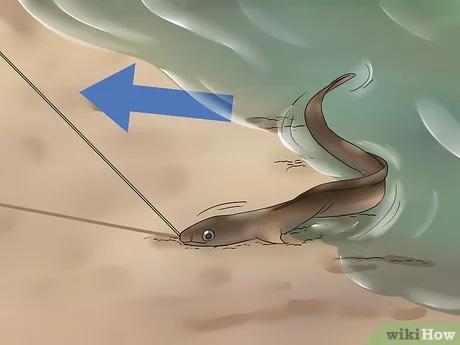Contents
Fishing for river eel: where it is found, when it spawns, what is better to catch and how to lure
A somewhat unusual fish for the majority of the Russian population, both in appearance and lifestyle. It has an elongated body, slightly reminiscent of a snake. Otherwise, it is a typical fish, the back of the body is flattened. The abdomen of young eels has a yellowish tint, while in mature eels it is whitish. The river eel is an anadromous fish (catadrom), a significant part of its life lives in fresh water, and spawning goes to the sea. In this, it differs from most of the fish familiar to us, which also have a migratory lifestyle, but go to spawn in fresh water. Dimensions can reach 2 m in length and weight more than 10 kg. But usually these fish are much smaller. An ambush predator that prefers a nocturnal lifestyle. There are known cases of eels crawling into other bodies of water on the ground during rain or on wet grass. In the world there are about 19 species of fish belonging to the genus eel, some of them can be dangerous to humans (electric eel). But the eel, common in the rivers of Europe and Russia, is not dangerous and can be an excellent object of fishing. River (European) eels of the genus Anguilla anguilla, despite their fairly wide distribution, belong to the same species. It is included in the IUCN Red List. In the case of fishing in natural reservoirs where this fish lives, it is necessary to clarify the rules of recreational fishing.
Ways to catch European eel
The fish leads a benthic, twilight lifestyle, prefers areas with calm water. Often lives in reservoirs. Related to this are the methods of fishing for eel. For fishing, various bottom, float gear is used; sometimes old ones – “on a needle”, or analogues of “circles” – “on a bottle”. An even more exotic way is catching an eel on a rig with a rope loop of impaled worms – crawling out and an umbrella instead of a landing net. The eel clings and hangs on a bunch of worms on hooked teeth, and in the air it is picked up by an umbrella.
Catching eel on the bottom gear
The main requirement for tackle for catching eel is reliability. The principles of equipment do not differ from ordinary bottom fishing rods or snacks. Depending on the conditions and desires of the fisherman, rods with a “blank rig” or equipped with reels are used. The eel is not particularly careful, so the use of thick, strong rigs is important not so much because of the resistance of the fish, but because of the conditions of fishing at night and in the evening. Eel is also great during the day, especially on cloudy or rainy days. Donks or “snacks” are best equipped with double or triple hooks. The most important condition for successful eel fishing is knowledge of the place of residence and food, as well as knowledge of the habits of local fish.
Baits
Fish are taught to the place of baiting, but, as in the case of other fish, this is not recommended on the day of fishing. For the most part, eels are caught with animal baits. These are various earthworms, taking into account the greed of this fish, either crawling out or smaller bundles tied into a bundle. Eel is perfectly caught on live bait or pieces of fish meat. Many Baltic eels prefer small lampreys, but at the same time they catch eels on almost any local fish.
Places of fishing and habitat
In Russia, the distribution of European eels reaches the White Sea basin in the North-West, and in the Black Sea basin they are occasionally observed along all tributaries to the Don River and the Taganrog Bay. Eels rise along the Dnieper to Mogilev. The northwestern eel populations are spread over many reservoirs of the inland waters of the region, from Chudskoye to Karelian lakes, including the rivers and lakes of the Belomorsky runoff. Eels inhabited many reservoirs of Central Russia, from the Volga reservoirs to Lake Seliger. At present, it sometimes comes across in the Moscow River, and is quite common in the Ozerninsky and Mozhaisk reservoirs.
Spawning
In nature, eels breed in the Sargas Sea of the Atlantic Ocean, in the zone of action of the Gulf Stream. After 9-12 years of life in the rivers and lakes of Europe, the eel begins to slide into the seas and move towards spawning grounds. The color of the fish changes, it becomes brighter, during this period sexual differences appear. Fish spawn at depths of about 400 m, spawning a huge amount of eggs, up to half a million or more. After spawning, the fish dies. After some time, the fertilized eggs turn into a transparent larva – a leptocephalus, which begins an independent life in the upper layers of the water, then, under the influence of the warm Gulf Stream, is gradually carried away to places of further residence. After about three years, the larva develops into the next form of development – the glass eel. When approaching fresh waters, the fish again metamorphoses, it acquires its usual color and already in this form enters the rivers.










